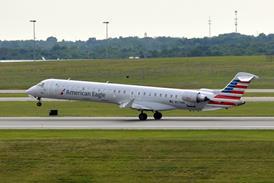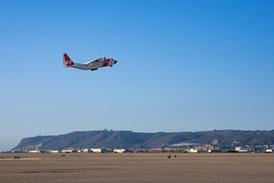Andrew Doyle/BANGALORE
India's Centre for Civil Aircraft Design & Development (CCADD) is preparing to roll out a prototype of its Saras 14-seat commuter aircraft, which it aims to fly later this year.
"We have almost completed structural integration and expect the first flight to take place by the end of 2001," says government-owned CCADD. The Saras, powered by two rear fuselage-mounted Pratt & Whitney Canada PT6Aturboprops in a "pusher" configuration, is being certificated in accordance with USFAR 25 requirements in an effort to boost the type's export potential.
The Rs1.3 billion ($28 million) programme originated in the early 1990s as a joint venture with Russian design house Myasishchev. It is now being carried out by Hindustan Aeronautics (HAL), National Aeronautics (NAL) and Taneja Aerospace. Talks over potential involvement in the project by Russian industry have, meanwhile, been broken off.
The Saras test programme is due to be completed in 2003 and is projected to require 1,000 flight hours using two prototypes. The aircraft will then be series-manufactured by a production partner, which CCADD says is "likely to be HAL", with major participation by Taneja. Under current planning, the wing will be built by HAL's plant at Nasik.
Though the Saras is primarily targeted at air taxi and commuter operators, it is also aimed at other roles including executive transport, light freight, coast guard, border patrol and medical evacuation. Its development is funded by the Indian Government.
CCADD associate project director Dr M S Rajamurthy says a key attribute of the Saras will be its ability to operate from "semi-prepared" airfields where demand for air services exists but cannot be met by general aviation operations.
Rajamurthy says the potential market for the Saras from both Indian and export customers is "around 300 aircraft over the next seven to 10 years".
The aircraft is designed to cruise at Mach 0.47, carrying 14 passengers over a distance of up to 850km (460nm).
Source: Flight International























